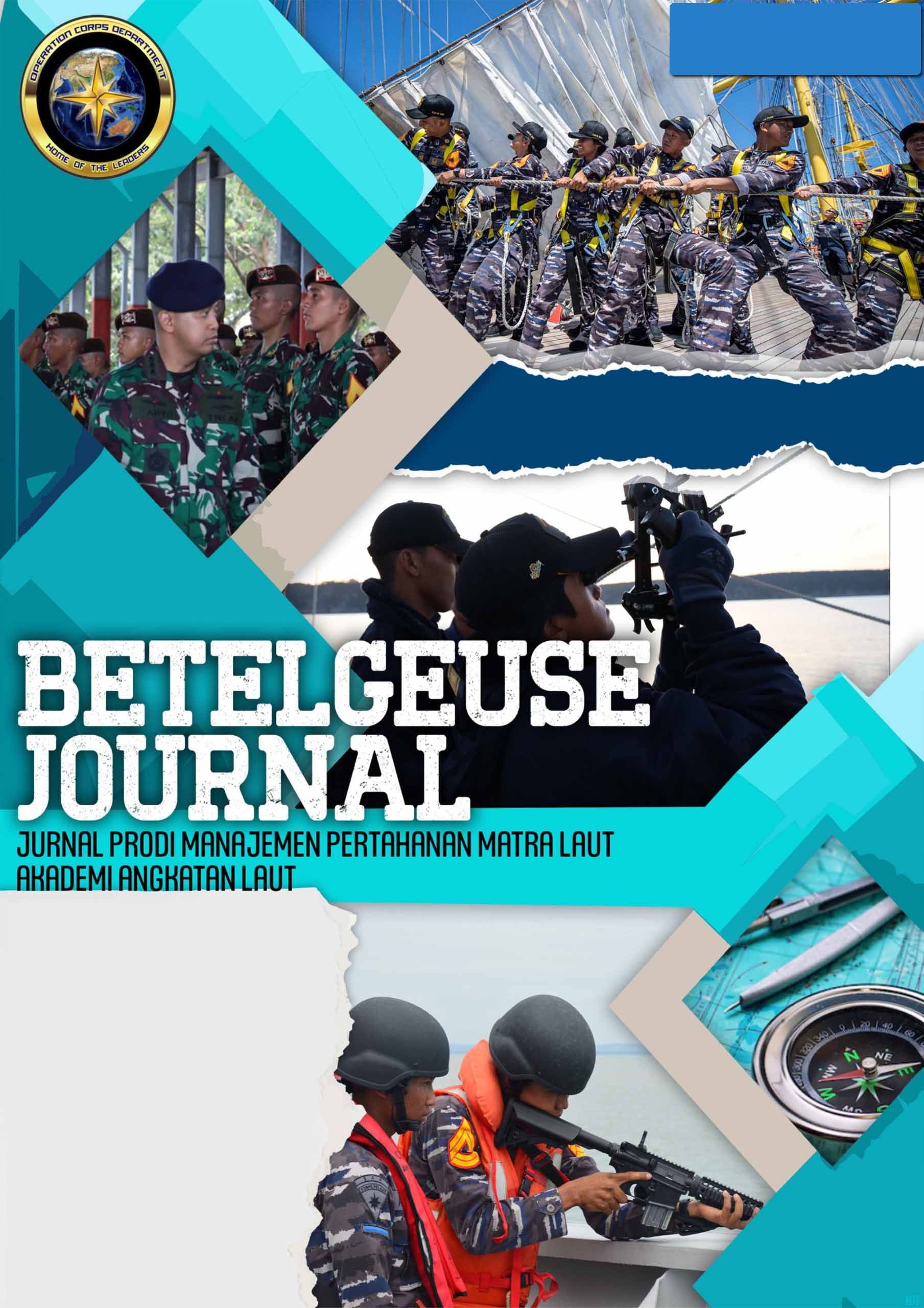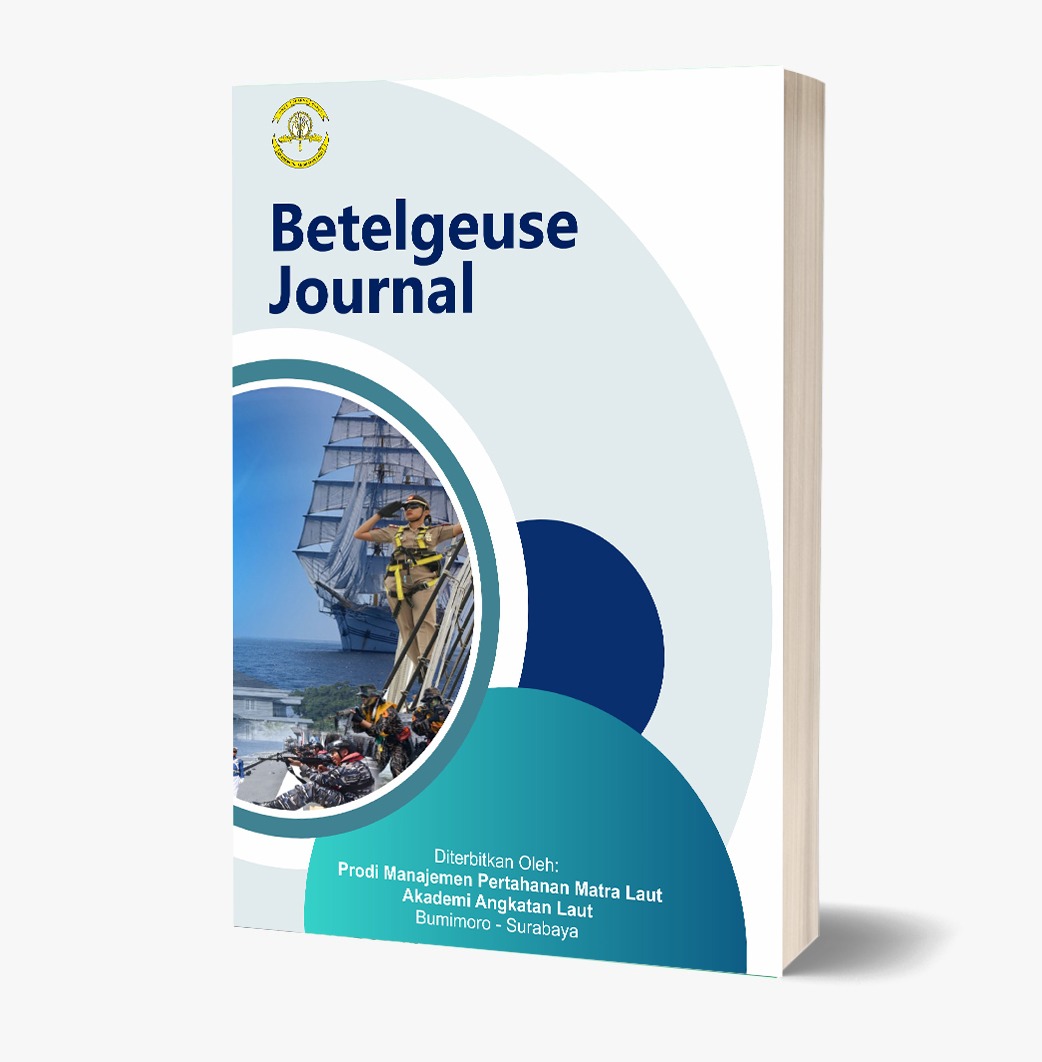KONSEPSI PEPERANGAN KEPULAUAN MENGGUNAKAN KAPAL TANPA AWAK BERBASIS ARTIFICIAL INTELLIGENCE
DOI:
https://doi.org/10.59447/betelgeuse.v2i1.87Keywords:
Unmanned Surface Vehicle, Archipelagic Warfare, AI, ALKI IIAbstract
The development of science and technology has caused the military forces of many countries to spend a lot of money and energy on research and development of automated, multi-faceted and effective (including lethal) technology. From a maritime perspective, this development has attracted widespread interest from many navies in underwater technology such as submarines and unmanned submarines. Modern submarines are now capable of moving at high speeds with very low noise levels, in addition to being able to carry weapons with very high destructive power and carry out diving operations for long periods of time. At the same time, modern unmanned underwater vehicles are now capable of carrying out various types of operations, including surveillance, minelaying, underwater surveys, and even the ability to carry long-range weapons up to thousands of kilometers away. It is undeniable that the development of other countries' navies is a real threat to Indonesia. To overcome this problem, an underwater surveillance system is needed in Indonesian waters, especially in deep waters which are likely to be used by other countries such as ALKI to carry out covert operations. This underwater surveillance system must utilize existing technological developments in order to carry out its functions effectively and sustainably, especially by using autonomous underwater vehicles (USVs). The use of USV in surveillance systems will save a lot of costs because it does not waste budget on expensive logistics, personnel, maintenance, and spare parts. This research is a research and development using mixed research methods (qualitative and quantitative) with research products in conceptual form. In this underwater surveillance system concept, USV will automatically conduct underwater contact surveillance along the ALKI II water body using sensors and software integrated into the USV.
References
Undang - Undang No.6. (1996). Perairan Indonesia. Pasal 1 Butir 8.
Undang - Undang Republik Indonesia. (2002). Undang - Undang Republik Indonesia Nomor 3 Tentang Pertahanan Negara. Jakarta: Kementrian Pertahanan.
Cresswell, J. W. (2016). Research Design, Pendekatan Metode Kualitatif, Kuantitatif, dan Campuran. Yogyakarta: Pustaka Belajar.
George A Boerhan Steiner. (2021). Perencanaan Strategi. Jakarta: Pustaka Binaman Pressindo.
Fajar Ramadhan (2017). Pembuatan Detail Desain Unmanned Surface Vehicle (USV) untuk Monitoring Wilayah Perairan Indonesia. Jurnal Teknik ITS. 2 (6),310.
D. Hardianto. Pembuatan Konsep Desain Unmanned Surface Vehicle (USV) untuk Monitoring Wilayah Perairan Indonesia. Publ. Ilm. Online Mhs. ITS, vol. 6, no. 2,2017
Pambudi, A. E., Maajid, L.,Rohman, J., & Mujahidin, I.(2019). Aplikasi Penggunaan Joystick Sebagai Pengendalian Remote Control Weapon Station (RCWS)Senjata Mesin Ringan (SMR). JASIEK (Jurnal Aplikasi Sains, Informasi, Elektronika Dan Komputer), 1(2), 98-105.
Ru-jian Yan, Shuo Pang, Han-bing Sun & Yong-jie Pang (2010). Development and Missions of Unmanned Surface Vehicle. Journal of Marine Science and Application.9, 451-457.
Noor, J. (2011). Metodologi Penelitian : Skripsi, Tesis, Disertasi, Dan Karya Ilmiah. Jakarta: Kencana.
Peraturan Pemerintah RI Nomor 37 . (2002). Penetapan Alur Laut Kepulauan Yang Dapat Digunakan Untuk Hak Lintas Alur Laut Kepulauan, Bab III Pasal 11 Ayat 3.
Sugiyono. (2017). Metode Penelitian Kuantitatif, Kualitatif, dan R&D. Bandung: CV Alfabeta.
Sujarweni, V. (2015). Metodologi Penelitian Bisnis dan Ekonomi, 33. Yogyakarta: Pustaka Baru Press.
TNI - Angkatan Laut. (2006). PUDD Khas TNI AL Perbaikan III Hal. 3 Tentang Pengertian
Downloads
Published
How to Cite
Issue
Section
License
Copyright (c) 2025 Betelgeuse Journal

This work is licensed under a Creative Commons Attribution-ShareAlike 4.0 International License.











